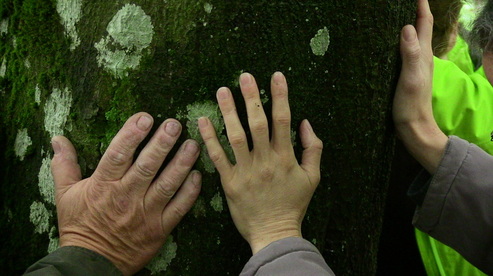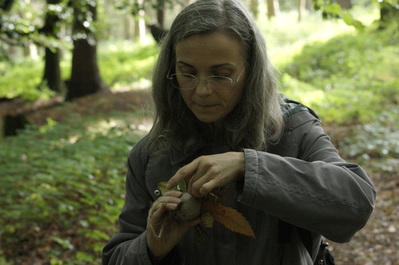
However, the location and activities of this workshop made me consider plants in new ways. In the Forest of Dean, away from the distractions of my daily routines, I experienced plants as physical, living beings and as potential interlocutor. I was struck by the sensuality and tenderness I felt when I stroked some trees’ beautifully tactile skin; suddenly it occurred to me that I was interacting with someone. I also found myself pondering the generosity of the forest that was surrounding me and letting me walk through, and the generosity of individual trees where I spotted plenty of tiny creatures whose life the trees support in many different ways.
I had worked with wood before, but had never had the opportunity to start working from a section of a newly felled tree. [part of the workshop involved carving spoons from green cherry tree logs]. Seeing and manipulating the section in its near integrity, still impregnated with its vital fluids, made me reflect on the fact that the building material we find pre-cut in DIY stores and so often take for granted comes from living beings. Carving was also a new experience for me and gave me a sense of how the structures that support life in the tree dictated how the shape we wanted should be carved out of it. I discovered the pleasure (and pain) of trying to go along with the layers of these structures in my carving, hoping that those structures would legitimise the shape of my spoon and the shape of my spoon would celebrate the wood’s structure. I think that was close to having a conversation with a tree, but I was also aware that the tree had to die in order for me to experience that.

 RSS Feed
RSS Feed
